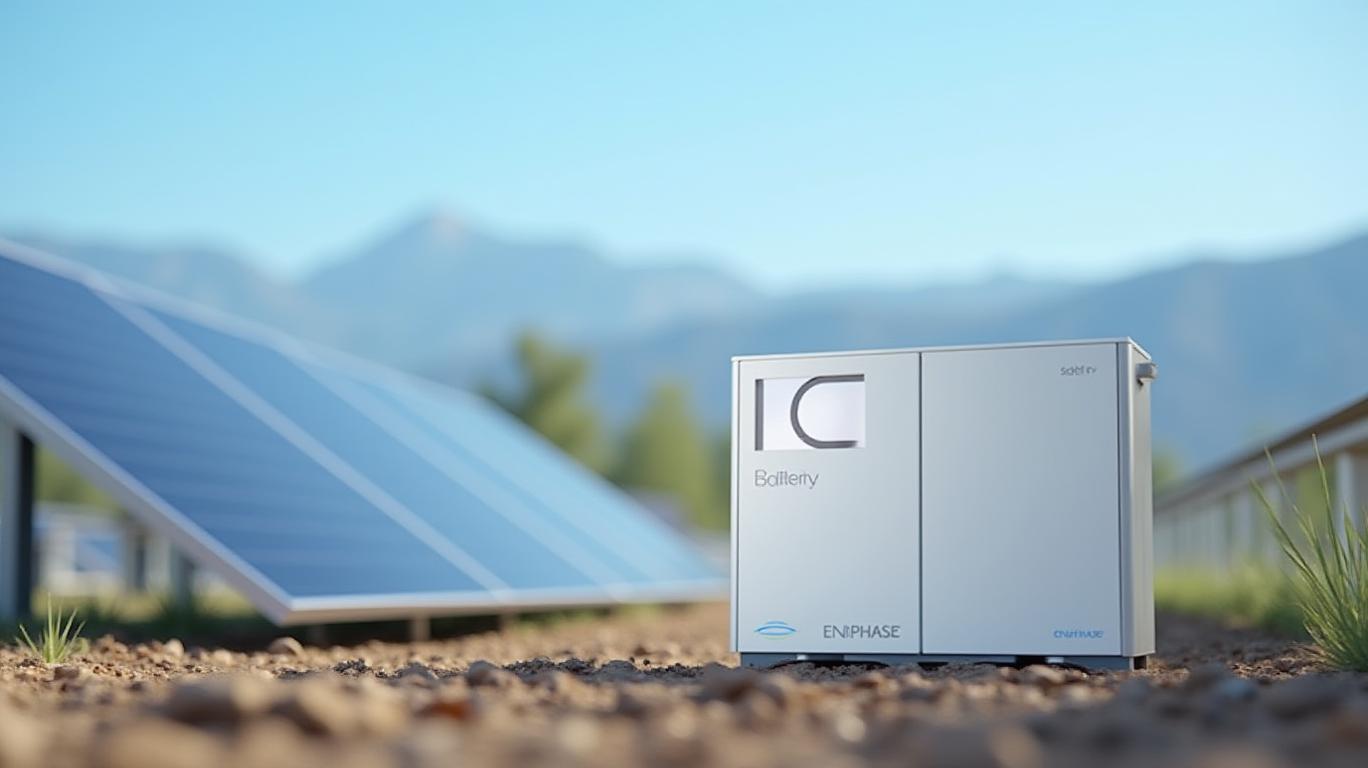Navigating Contradictions: How Regulatory Risks and Valuation Debates Create Asymmetric Opportunities in Wayfair and Enphase
In today’s volatile investment landscape, two sectors—e-commerce and clean energy—are grappling with contrasting Wall Street narratives. While
(NASDAQ:ENPH) faces regulatory headwinds and tariff-driven margin pressures, Wayfair (NYSE:W) navigates a contracting home furnishings market with supplier-driven resilience. Both companies exemplify asymmetric opportunities: scenarios where the potential upside outweighs the downside due to mispriced risks and divergent analyst views. Let’s dissect how these dynamics create compelling entry points.The Contradictions: Regulatory Risks vs. Valuation Debates
Enphase Energy: Regulatory Crossroads and Overvalued Concerns

Enphase’s stock has plummeted 56.73% over the past year, driven by fears around the potential repeal of Section 25D (the U.S. solar tax credit) and rising tariff costs on Chinese battery imports. Analysts at Barclays and BMO downgraded the stock, citing risks from shifting to third-party ownership (TPO) models, which favor rivals like Tesla. Yet, Enphase’s 35.22% YoY revenue growth (Q1 2025) and 3.62% ROE highlight operational resilience.
Why the Contradiction?
- Bearish Case: Section 25D’s repeal could shrink Enphase’s core non-TPO market, while tariffs and debt (debt-to-equity of 1.49) weigh on margins.
- Bullish Case: Its IQ8P microinverters dominate global markets, and plans to source non-Chinese batteries by 2026 could stabilize margins. Analysts at Goldman Sachs still see a $78 price target, implying 64% upside from current levels.
The Asymmetric Opportunity: The stock’s current price of $47.94 trades below its $52.1 average target, with a $31.11 low target undershooting long-term growth potential in solar-plus-storage.
Wayfair: Supplier Dynamics vs. a Bearish E-Commerce Climate
Wayfair operates in a contracting home furnishings market, yet its Q1 results defied expectations: revenue held flat at $2.73B, and adjusted EBITDA margins expanded to 3.9%—a 120-basis-point improvement from 2024.
Why the Contradiction?
- Bearish Case: A β of 3.73 signals extreme volatility, and the sector’s fourth year of contraction raises growth doubts.
- Bullish Case: Wayfair’s platform model leverages 20,000+ suppliers competing to set low wholesale prices, shielding it from tariffs. CastleGate inventory and supplier advertising (now 150+ basis points of revenue) fuel margin resilience. Morningstar’s $70 fair value implies 113% upside from its current $32.69 price.
The Asymmetric Opportunity: With $1.4B in cash and plans to lift EBITDA margins to 8% by 2030, Wayfair’s valuation at 0.4x forward revenue is a buy-the-dip candidate in a weak retail sector.
Why These Contradictions Matter Now
- Regulatory Tailwinds for Clean Energy: While Section 25D’s repeal threatens Enphase, global shifts to solar-plus-battery systems (e.g., Europe’s export penalties) favor its IQ10C battery. The IRA’s tax credits (up to $33M in Q2) further insulate U.S. manufacturing.
- E-Commerce’s Supplier-Driven Edge: Wayfair’s platform economics let it thrive even as peers falter. Supplier competition and data-driven tools (e.g., off-site ad partnerships) are non-replicable moats in a commoditized space.
Investment Thesis: Buy the Dip, Play the Long Game
- Enphase: The $40 price target by Barclays seems shortsighted given its 9.35% net margin and global expansion (e.g., Brazil’s fire safety regulations). Investors should accumulate shares below $50, targeting the $78 high.
- Wayfair: Its $32.69 price is a fraction of its $70 fair value, with risks like tariffs and macro weakness already priced in. A $70–$100 range is achievable if margins hit 8%.
Action Items:
1. Dollar-Cost Average into ENPH and W over the next 3–6 months.
2. Set Trailing Stops: Protect gains at $40 (ENPH) and $30 (W).
3. Monitor Catalysts: Enphase’s Q2 shipments of 160–180 MWh batteries and Wayfair’s Q2 EBITDA margin guidance (4–5%) will signal execution strength.
Conclusion: Mispriced Risks, Misunderstood Resilience
Both Enphase and Wayfair face headwinds, but their platform-driven business models and strategic pivots (tariff mitigation, supplier partnerships) create asymmetric upside. In a market obsessed with short-term noise, these stocks offer a rare chance to profit from contradictions—buying when fear outweighs fundamentals.
The time to act is now.
Disclosure: This article is for informational purposes only. Always conduct your own research before making investment decisions.

Comments
No comments yet